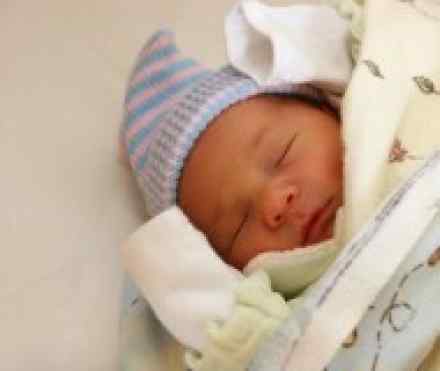
What is it?
- Infantile seborrheic dermatitis, commonly called cradle cap, causes scaly patches on a baby's scalp. Though cradle cap isn't serious, it can cause thick crusting and white or yellow scales.
- Cradle cap usually resolves on its own within a few months. Self-care measures, such as washing your baby's scalp daily with a mild shampoo, can help loosen and remove the scales. If cradle cap persists or seems severe, your doctor may suggest a medicated shampoo, lotion or other treatment.
Symptoms
Common signs of cradle cap include:
- Patchy scaling or thick crusts on the scalp
- Greasy skin covered with flaky white or yellow scales
- Skin flakes or dandruff
- Possibly mild redness
Similar scales may also be present on the ears, eyelids, nose and groin.
Cradle cap is most common in newborns. It isn't contagious and probably won't bother your baby. In most cases, the condition isn't itchy for infants.
Causes
Though the exact cause of cradle cap isn't known, one contributing factor may be hormones that pass from the mother to the baby before birth. These hormones cause an abnormal production of oil (sebum) in the oil glands and hair follicles.
Another factor may be a yeast (fungus) called malassezia that grows in the sebum along with bacteria. Antifungal treatments, such as ketoconazole, are often effective, supporting the idea that yeast is a contributing factor.
When to seek medical advice
See your baby's doctor if:
- You've tried self-care steps without success.
- The patches spread to your baby's face or body.
Treatments and drugs
Cradle cap usually doesn't require medical treatment. It clears up on its own within a few months. In the meantime, wash your baby's hair once a day with mild baby shampoo and brush the scalp lightly with a soft brush to loosen the scales.
If frequent shampooing doesn't help, consult your baby's doctor. He or she may recommend a stronger shampoo — such as an adult dandruff shampoo containing tar, 2 percent ketoconazole or 1 percent selenium — to help dissolve the scales. Hydrocortisone cream applied daily or every other day is sometimes helpful to reduce redness and inflammation.
For older babies, scalp ringworm infections may resemble cradle cap. This condition may require a prescription antifungal shampoo. Another condition resembling cradle cap is infantile eczema.
Lifestyle remedies
The following over-the-counter treatments and self-care tips can help you control and manage cradle cap.
- Gently rub your baby's scalp with your fingers or washcloth to loosen the scales.
- Wash your baby's hair once a day with mild baby shampoo. Loosen the scales with a small, soft-bristled brush before rinsing off the shampoo.
- If the scales don't loosen easily, rub petroleum jelly or a few drops of mineral oil onto your baby's scalp. Let it soak into the scales for a few minutes, and then brush and shampoo your baby's hair as usual. If you leave the oil in your baby's hair, the scales may accumulate and worsen the cradle cap.
- Once the scales are gone, wash your baby's hair every few days with a mild shampoo to prevent scale buildup.
Prevention
Shampooing your baby's hair every few days can help prevent cradle cap. Stick with a mild baby shampoo unless your baby's doctor recommends something stronger.
References:
http://www.eumom.ie/baby/10-products-to-treat-cradle-cap-as-recommended-by-you/
http://www.babycenter.com/0_cradle-cap-infantile-seborrheic-dermatitis_80.bc
http://www.babycentre.co.uk/a80/cradle-cap
https://www.hse.ie/eng/health/az/C/Cradle-cap/Treating-cradle-cap.html
https://en.wikipedia.org/wiki/Cradle_cap

